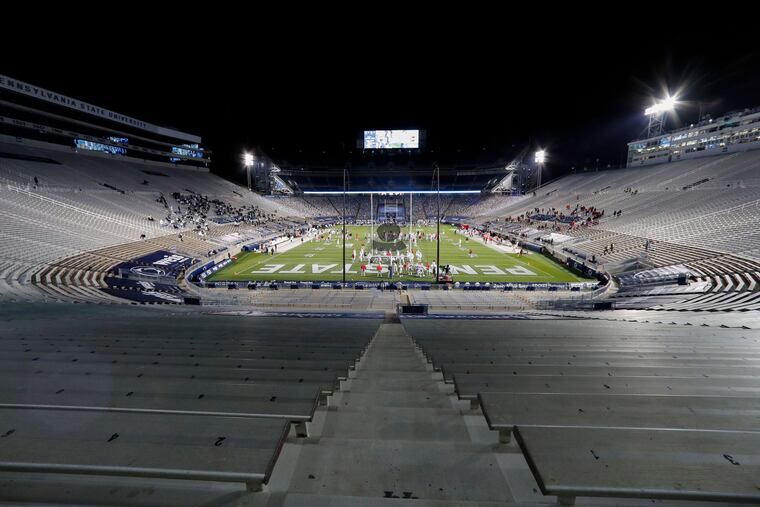Penn State’s COVID-19-related financial losses in athletics aren’t as bad as first feared
Vice president of athletics Sandy Barbour said at one point, deficit projections in the pandemic were forecast to top $100 million. But television revenue and alumni donations helped reduce the gap.

As Penn State’s athletic department faced a severe reduction in ticket revenue from not being able to have more than a few hundred fans in attendance at 2020 home football games, it projected that losses of perhaps more than $100 million were likely with a loan of $50-75 million needed to cover the deficit.
While there still is a shortfall that must be addressed in the new fiscal year, vice president of athletics Sandy Barbour says the losses will be well below the original projections.
“As we started our budgeting process for [fiscal year] 2021-22, we were using the number of having to borrow about $25 million,” Barbour said Tuesday night during the virtual Penn State Coaches’ Caravan for university alumni.
“We’ve continued to bring that down, and we think we might have that number to about between $18 and $20 [million], and the university will provide us access to a line of credit to help us address that gap.”
Football was the only sport played during the fall season, with other sports being conducted from December, including other fall sports being played in the spring. After the original deficit projections “kept me up at night sometimes,” Barbour said as the Nittany Lions got through football season, television revenues were helping reduce the gap, as did alumni donations.
“We began to see the results of our expense savings and that gap started to come down,” she said. “We were very fortunate enough to have some reserves and that continued to bring it down even more.”
Barbour said the goal is to pay the deficit off as quickly as possible.
“What we don’t want is to have what I’ve referred to financially as kind of that COVID hangover,” she said. “We don’t want COVID to impact us for years to come. We were fortunate to have healthy reserves. Again, we think that number is between $18 and $20” million.
A release sent out last week by the athletic department said that cost-control measures resulting from the COVID-19 shutdown in March 2020, including the cancellation of spring sports seasons and a cutback on recruiting, saw a significant decrease in expenses. Those measures “will assist in minimizing Penn State’s currently anticipated revenue shortfall” in the 2021-22 fiscal year, it said.
» READ MORE: Penn State announces return to full capacity at Beaver Stadium and other campus sports venues
Barbour also discussed the implementation of a study involving the athletic department and Populous, a global architecture and design firm, to work on what she called “the next step in our journey to renovate Beaver Stadium … a massive multiyear project.”
The study will cover current and upcoming required maintenance projects and “renovation options to improve fan comfort and provide a greater variety of amenities to support the evolving needs of the student-athletes, fans and campus community,” according to a release.
“We’re not getting ready to put any shovels in the ground,” Barbour said. “We need to make sure that our planning and our decisions about what our needs are and how we’re going to address those needs, are addressed in this study. We’re talking to a lot of different constituents, on campus and off, about what our needs are and looking at really having Beaver Stadium as an asset to our community but be used more than eight or nine days out of the year.
“So what other activities, what other benefits to the community can be housed in Beaver Stadium that would make it more than an eight-day-a-year facility? We’re also looking at the long-term maintenance, making sure we have a solid long-term maintenance plan as well as obviously the funding plan for the renovation.”